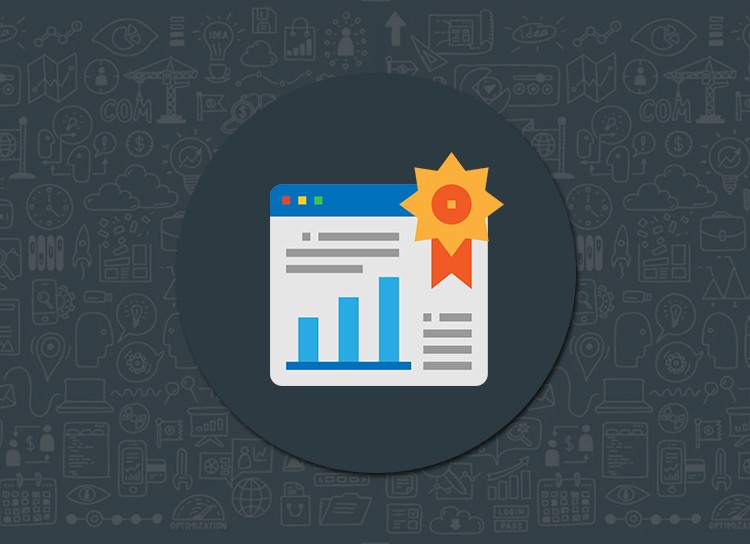SEO Case Study: 5 On-Page SEO Ranking Factors Analyzed and the Results Are In!
Contents
Does Your Blog Age Like a Fine Wine?
What’s the Word on Word Counts?
Are You Dense If Your Keyword Density Isn’t High Enough?
Leveraging Prominent Google Ranking Factors
What’s our idea of holiday fun here at Search Berg? This year, we wished for a massive SEO dataset to analyze! What can we say, we love what we do. The best part? We got what we wished for!
Our SEO elves have been hard at work, looking at all kinds of variables; from how long ago a blog was published, to its word count, keyword density, and so much more. The results made us question a lot of our assumptions, and we think they’ll make everyone better at SEO. So buckle up and get ready for the definitive SEO ranking factor analysis going into 2019! We’ve rounded up the most crucial SEO ranking factors you should know and examined their performance to help you gauge their efficacy. Let’s dive in!
Does Your Blog Age Like a Fine Wine?
Considering the obsession most SEOs (for good reason, mind you) have with fresh content, it’s no surprise that most people don’t usually look at how content performs over a long period of time. We realized really quickly that this was an area that was rife with research potential. And here’s what we found.
At first glance, the data showed some levels of negative correlation when Search Position (for targeted keywords) is plotted on the x-axis and Number of Days is plotted on the y-axis. What does this imply? That it takes a while for your article or blog to actually achieve its ranking potential. How long? Our data showed that it can take more than 100 days! That’s an unprecedented finding.
But wait, how strong is this correlation? We used the Pearson Correlation Coefficient and found that it hovers around -.421, meaning that the relationship is moderate. If you thought that’s all there is to it, you would’ve been wrong. It turns out that there’s another dimension to this; target keywords that are in the top 10 take a lot longer to fully mature and manifest on rankings.
The difference between keywords in the top 10 and those outside it is as large as 80 days! What does that mean? For one, you shouldn’t gauge the ranking success of a highly popular target keyword article until it’s been at least 140 days. While those targeting a less popular keyword can mature in 70–80 days. This has massive repercussions for long-term SEO success evaluation.
If you’ve been following this blog so far, you know there’s another twist coming. Our data also found that over time, articles that rank for more popular keywords start ranking higher for related or variant keywords as well. This means that as an SEO expert who does long-term analysis of organic traffic, you need to look at a much longer period.
Backlinks Are A Bust?
Having read the data about rankings, I bet you’re stoked about finding similar results for backlinks. After all, if keyword ranking builds over time when we didn’t expect it to, surely backlinks are abound 100 days in? Well… not so much.
Our results showed abysmal growth over time. On average, blogs generated around 1 backlink from 0.6 linking domains. Ok, so that’s bad. But surely articles that rank for more popular keywords must develop more backlinks over time? Nope. The data shows little to no variance between the two variables.
So while backlinks are important as always, it seems like the blogs and articles we studied performed despite their poor backlink generation.
What’s the Word on Word Counts?
Content comprehensiveness has been an SEO buzzword for a while now; we’ve written about it, and so have countless other SEO blogs. But does content comprehensiveness mean that longer word counts mean better rankings? Not in 2018 and beyond!
Google’s Hummingbird algorithm has come a long way since being launched in 2013. The machine learning it employs can now identify search intent in blogs pretty accurately. And this means being able to tell when a shorter article is more comprehensive than a longer one.
Our Pearson Correlation Coefficient for word count and target keyword positioning showed a negligible value of less than 0.100! What’s even more surprising? That longer content didn’t even rank higher for incidental and related keywords. In fact, there was a very small negative correlation.
Still not convinced? Let’s put the final nail on the coffin; it turns out that even if you strategically write longer content pieces than your competitors to be more comprehensive, there’s still no correlation.
The takeaway? We guess that better writers can employ brevity while still satisfying everything a reader wants to know. Let’s also not forget that attention span isn’t really our strong suit anymore. Keep your articles short, keep them keyword rich.
On-Page SEO to Warm the Soul?
Everyone loves sticking to old habits. They’re comfortable, you know them like the back of your hand, and they’re usually further from the truth than we’d like to believe. So for the old-school SEO enthusiasts in the room who swear by on-page optimization, we’ve got some news for you.
The results are in, and… you can rest easy! We’re sorry for the needless suspense, but it turns out that on-optimization still shows a pretty strong correlation with page rankings. More than 74% (!) of pages that rank in the top for a specific keyword have really high page optimization. How do you measure page ranking? It depends on everything from meta-tags to other on-site elements. We used our proprietary analysis tools to establish a page’s optimization levels.
So for the people who were holding their breaths till this point in the blog, keep calm and keep optimizing!
Recommended Reading: What Matters To Google: Ranking Factors in 2020
Are You Dense If Your Keyword Density Isn’t High Enough?
There are whole industries built around this old wives’ tale. “Make sure you’ve used the target keyword at least x times in the article, my SEO friend told me that the more you use it the better you’ll rank” is a pretty common thing to hear in SEO circles.
And to be honest, it doesn’t surprise us. In the early days of search engines, the simple, pre-Hummingbird days, there were thousands of pages that rose to the top through keyword stuffing. As we’ve insinuated earlier in this blog, however, search algorithms are a lot more discerning now.
Our research shows that there’s actually a negative correlation between using too many keywords and how high your page ranks on Google. This is in line with what Google stated it set out to do when developing the Hummingbird algorithm.
Surely there must be a magic number, though? Nope, nada. You can stop with this archaic practice now and actually produce content that is readable and makes sense to visitors.
Leveraging Prominent Google Ranking Factors
Did you find this lowdown of the most crucial SEO ranking factors useful? Do you want to optimize your web and blog content using these strategies but don’t have the resources? That’s where Search Berg comes in! We recently completed our 15,000th SEO project, making us one of the industry’s leading SEO firms.
As evidenced in this blog, we always take a data-driven approach to SEO analysis, optimizing our client’s websites so they have long-lasting results. If you’re ready to master on-page SEO ranking factors, we’re right behind you!














